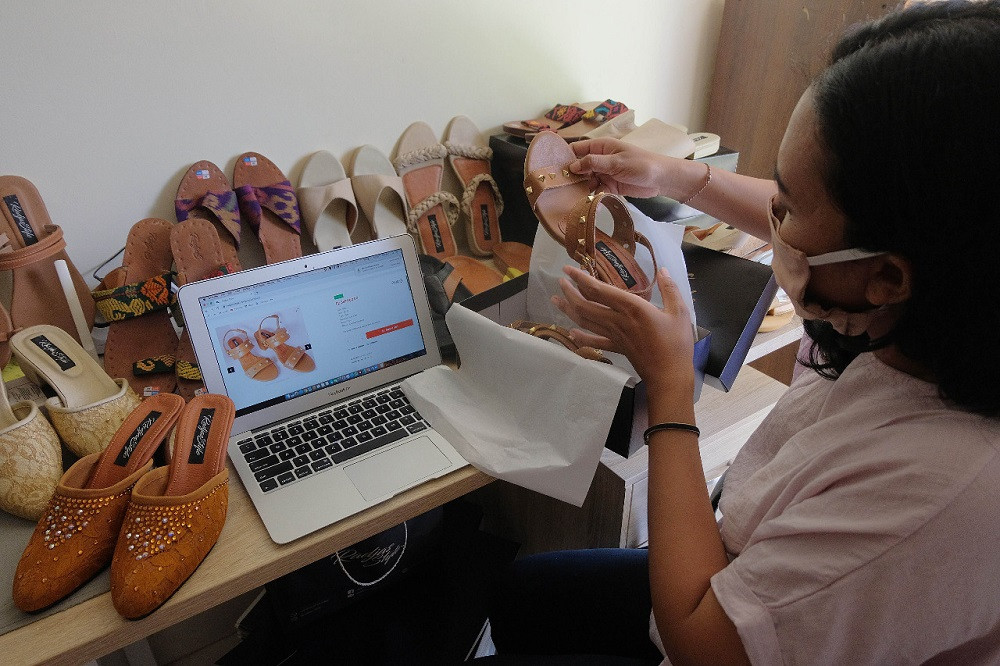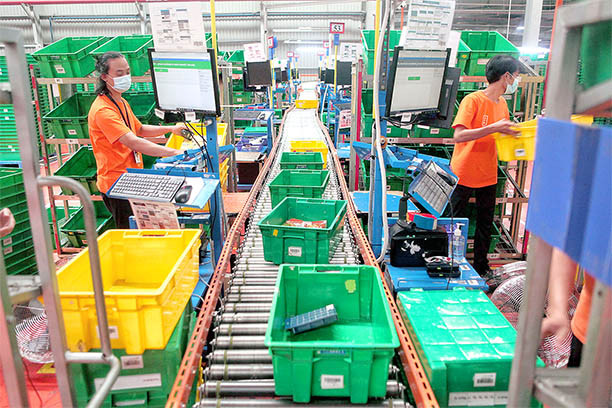Popular Reads
Top Results
Can't find what you're looking for?
View all search resultsPopular Reads
Top Results
Can't find what you're looking for?
View all search resultsSmall cities to grow RI’s digital economy
A 2021 market outlook on Indonesia's digital economy sees small cities overtaking Greater Jakarta, the current digital hub, with fivefold growth by 2025.
Change text size
Gift Premium Articles
to Anyone
S
mall cities in Indonesia are to become the biggest contributors to the country’s digital economy in the next four years, replacing metropolitan cities like Jakarta and Bandung as consumers in big cities reach maturity, says a 2021 report.
Digital growth in nonmetropolitan areas such as Magelang in Central Java and Denpasar in Bali will expand around 5 times by 2025 to surpass growth in bigger cities, according to the report by Indonesia's Alpha JWC Ventures and global consultancy Kearney.
The pace of growth of Indonesia’s digital economy accelerated as a result of mass digital adoption due to restrictive COVID-19 policies, and is expected to continue as start-ups expand to smaller cities.
“Despite remarkable digital economy growth, most regions [in Indonesia] have yet to experience this because digital solutions are often developed and concentrated in Jakarta,” said Chandra Tjan, cofounder and general partner at Alpha JWC Ventures, as quoted in a press statement provided on Wednesday.
Indonesia’s internet economy was forecast to grow 11 percent year-on-year (yoy) in 2020 to reach a value of US$44 billion and by 2025, was projected to make up a large portion of Southeast Asian’s potential internet economy worth $310 billion, according to the e-Conomy SEA 2020 report by Google, Temasek and Bain & Co.
Chandra expressed optimism that increasing digital development and adoption in smaller, nonmetropolitan cities would lead to the birth of new unicorns in e-commerce, peer-to-peer (P2P) lending and the small and medium enterprise (SME) service segments.
Read also: Alpha JWC Ventures expects more unicorn start-ups to emerge from fintech, consumer sector
The Alpha JWC-Kearney report also notes that e-commerce and e-payment systems will benefit the most from digital adoption in small cities, while other sectors like education technology (EdTech) and digital health technology (health tech) will see significant growth from their currently low baseline.
Nonmetropolitan areas are forecast to contribute $45 billion in gross merchandise value (GMV) in 2025, a fivefold increase in GMV from $9 billion last year. Meanwhile, the e-payment segment is projected to see the highest growth as small cities contribute up to $20 billion in gross transaction value (GTV), an increase of almost sevenfold from $3 billion last year.
Small cities are also projected to make up 48 percent of the domestic e-commerce market, and take 46 percent and 45 percent of the respective market share in health tech and EdTech.
The report adds that small cities are seeing growth in middle-class consumers as well as infrastructure development, both of which supported digital development.
“Although [start-up] expansion might [create] competition, it also validates the digital potential of tier 2 and tier 3 cities,” it said.
Read also: Other islands close gap with Java in digital competitiveness
In recent years, start-ups have begun tapping into the potential of exurb areas that extend outside a city’s suburbs. E-commerce platform Bukalapak, for example, has partnered with 5.4 million offline merchants through its Mitra Bukalapak (Bukalapak Partners) program for modernizing traditional retailers.
Bukalapak reported last year that a large share of its growth had come from Indonesia’s second- and third-tier cities as a result of infrastructure penetration through its offline partners.
Employees sort out goods at a Lazada warehouse in Cimanggis, West Java. (JP/Seto Wardhana)Meanwhile, digital lender Kredivo reported that loan disbursements to small cities more than doubled from 10 percent to 21 percent in 2018-2020. It also stated that users in nonmetropolitan areas had a transaction frequency rate that was more than 1.13 times the rate of users in metropolitan areas.
“We believe that nonmetropolitan cities in Indonesia have a lot of potential, […] especially since there is still a large underserved population due to low credit penetration, despite per capita income growth,” Kredivo vice president of marketing and communications Indina Andamari told The Jakarta Post on Monday.
Similarly, SME fintech services start-up BukuWarung has also been focusing on exurb consumers, saying that 74 percent of its 5 million users were based in tier 2, tier 3 and tier 4 cities in the country.
BukuWarung cofounder and CEO Abhinay Peddisetty said that one strategy the company employed to acquire new users in nonmetropolitan areas was to offer digital payment systems that were compatible with the platform’s bookkeeping feature.
“We saw the adoption of digital payments as a strategic driver to enable monetization through credit, savings and other financial services at a later stage in the merchant's [business] life cycle,” he said.
The report, Unlocking the Next Wave of Digital Growth: Beyond Metropolitan Indonesia, was made in collaboration with Amazon Web Service, Credit Suisse and Xiaomi Indonesia.











